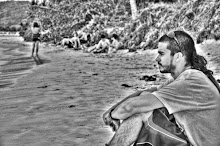Lepanthes woodburyana
The name came to honor Roy Woodbury, Professor Emeritus of the University of Puerto Rico and a knowledgable botanist.
"Prior to 1969, only two species of Lepanthes were known for Puerto Rico. After considerable field and herbarium studies, six more species were aadded by Stimson (1969), all described as new and endemic. One of these was L. woodburyana, which happens to be the most common and widespread Lepanthes on the island."
"Several of the Lepanthes in Puerto Rico have very similar morphologies and differ only by characteristics of the inflorescences and flowers. The largest floral parts of L. woodburyana and related species are the sepals, and they are less than four mm long. L. woodburyana has inflorescences that lie on the underside of the leaves, red and yellow flowers, a red blotch at the base of the dorsal sepal, and a lip with a violin-shaped middle lobe that is nearly impossible to see without magnification."
"They flower throughout the year and are often abundant on shaded rocks and tree trunks."
Spathoglottis plicata
"The specific epithet means "pleated" in Latin and refers to the surface of the leaves."
"This species is native to India, South Asia and the Philippines. It was just recently reported for Puerto Rico but has naturalized in many parts of the tropics."
"A weedy terrestrial orchid that prefers open, usually grassy, disturbed habitats. Populations occur along roadcuts."

"The plicate leaves may reach a meter in length and superficially resemble those of Bletia patula and Eulophia alta. Pink flowers and distinctly slender, trilobed lip separates it from the formers mentioned. S. plicata produces numerous flowers over a long period, but only a few are open at the same time. They self-pollinate and fruit production is prolific."
If you have been with ACAMPA Nature Anventure in the half day tour you may have seen this orchid after the "Mud Trail".
Dichaea hystricina
"The epithet, hystricina, is derived from the Greek word for porcupine and refers to the small fruits, densely covered with soft prickles" (picture below, right).
What distinguish this orchid from all others in Puerto Rico is the tufts of slender stems covered by overlaping and prickly-looking leaves. There are two other species of Dichaea on the Island: D. latifolia Lindley and D. pendula (Aublet) Cogniaux.


"Single flowers emerge primarily in the late summer. Self-pollinaton likely occurs because nearly all flowers develop fruits and the known pollinators of dichaeas, male euglossine bees, do not exist in Puerto Rico."
The best way to encounter this species is on giant clums of introduced baboo along the road that leads to the El Yunque Rain Forest.
"The species also occurs in Cuba, the Lesser Antilles, Venezuela, Colombia and Central America."








































